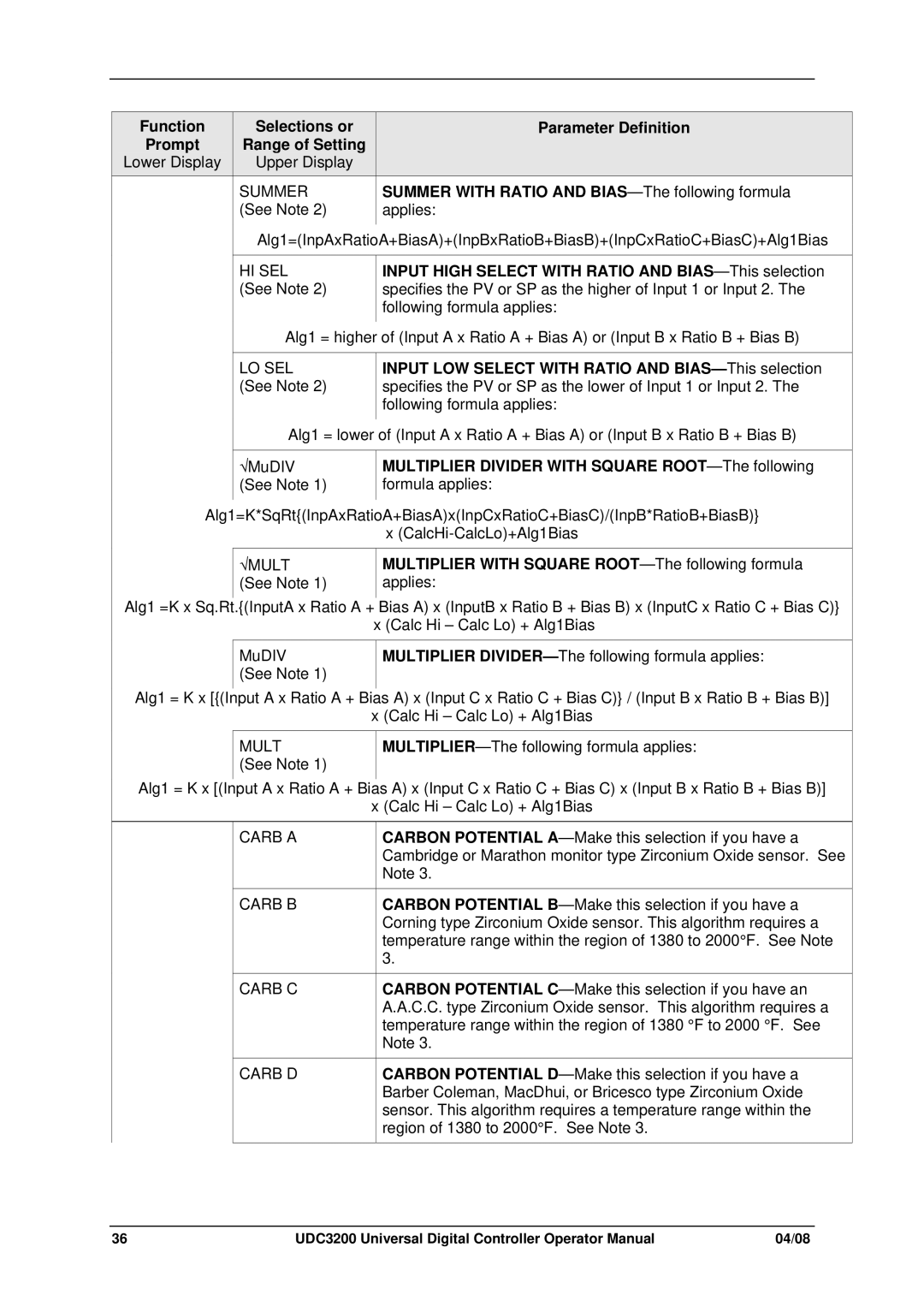
Function | Selections or |
|
| Parameter Definition |
Prompt | Range of Setting |
|
|
|
|
|
| ||
Lower Display | Upper Display |
|
|
|
| SUMMER |
|
| SUMMER WITH RATIO AND |
| (See Note 2) |
|
| applies: |
| Alg1=(InpAxRatioA+BiasA)+(InpBxRatioB+BiasB)+(InpCxRatioC+BiasC)+Alg1Bias | |||
|
|
|
|
|
| HI SEL |
|
| INPUT HIGH SELECT WITH RATIO AND |
| (See Note 2) |
|
| specifies the PV or SP as the higher of Input 1 or Input 2. The |
|
|
|
| following formula applies: |
|
|
|
|
|
Alg1 = higher of (Input A x Ratio A + Bias A) or (Input B x Ratio B + Bias B)
LO SEL | INPUT LOW SELECT WITH RATIO AND |
(See Note 2) | specifies the PV or SP as the lower of Input 1 or Input 2. The |
| following formula applies: |
|
|
Alg1 = lower of (Input A x Ratio A + Bias A) or (Input B x Ratio B + Bias B)
√MuDIV | MULTIPLIER DIVIDER WITH SQUARE |
(See Note 1) | formula applies: |
|
|
Alg1=K*SqRt{(InpAxRatioA+BiasA)x(InpCxRatioC+BiasC)/(InpB*RatioB+BiasB)}
x
√MULT (See Note 1)
MULTIPLIER WITH SQUARE ROOT—The following formula applies:
Alg1 =K x Sq.Rt.{(InputA x Ratio A + Bias A) x (InputB x Ratio B + Bias B) x (InputC x Ratio C + Bias C)}
x (Calc Hi – Calc Lo) + Alg1Bias
MuDIV (See Note 1)
MULTIPLIER
Alg1 = K x [{(Input A x Ratio A + Bias A) x (Input C x Ratio C + Bias C)} / (Input B x Ratio B + Bias B)]
x (Calc Hi – Calc Lo) + Alg1Bias
MULT
(See Note 1)
Alg1 = K x [(Input A x Ratio A + Bias A) x (Input C x Ratio C + Bias C) x (Input B x Ratio B + Bias B)]
x (Calc Hi – Calc Lo) + Alg1Bias
CARB A
CARB B
CARB C
CARB D
CARBON POTENTIAL
CARBON POTENTIAL
CARBON POTENTIAL
CARBON POTENTIAL
36 | UDC3200 Universal Digital Controller Operator Manual | 04/08 |
